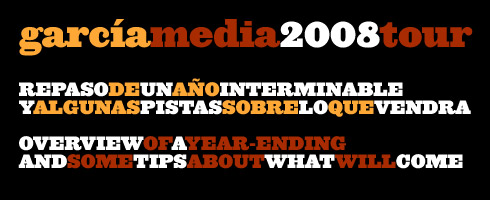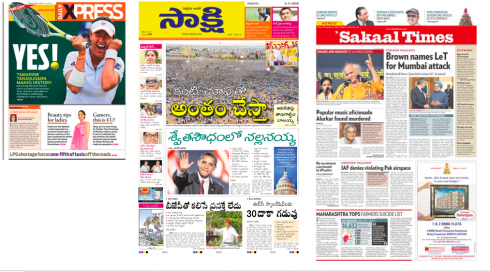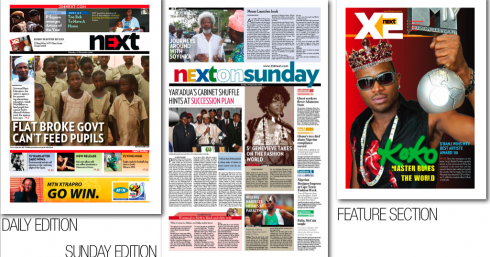

In the midst of one of the worst economic downturns in history——and with the newspaper industry severely affected not only by the economy, but also by trends in how media users consume news and information—-we witnessed the start of three new newspapers, with a fourth completed, and ready for launch Jan. 4, 2009 (Next, in Lagos, Nigeria).

The new newspapers are:
The Daily Xpress of Bangkok, Thailand
Saatschi of Hyderabad, India
Saakal Times, Pune, India
Each of these newcomers represents a milestone in its circulation area; In Bangkok, The Daily Xpress became the first free newspaper ever in Thailand, with one important characteristic: it is distributed free by itself, but also inserted as a supplement to the paid newspaper, The Nation, which has become an economics/politics daily.
In Hyderabad, India, the new Saatschi is published in the Telugo regional language, and sells over one million copies daily.
In Pune, India, the Saakal Times becomes the English-language newspaper of the area, while the same media house produces another one of our products, Saakal, in the Marathi language.
2008 and the trends
As we worked through more than 20 different projects during the year, our Garcia Media team and I witnessed the following trends shaping up among our clients:
—Consolidation of content
—-more newspaper editors and publishers worldwide took a good, hard look at how they present information, and considered different ways of merging related content, and, in some instances removing sections and departments no longer viable economically, or as a result of online coverage. Specifics that come to mind:
*Stock listings—-in some instances, four pages of these numbers were brought down to two.
*Classifieds—this is one area where many newspapers studied the section to eliminate categories, or extend offerings through online.
*Mixing of sections—-it is not unusual these days to combine sports and business, for example. With proper guidance, readers don’t seem to mind when changes in the “flow of the book” are made.
—Change of page format
—-while European newspapers continue to turn to the compact formats to facilitate use of the newspaper, while saving money, several newspapers in the United States, including The Oklahoman, adopted the narrower 44” web. More traditionally broadsheet newspapers worldwide also switched to “tabloid” format for supplements inserted in the newspaper.
—More attention to navigation
—-If there was one issue that all newspapers turned their attention to was how to make the reader’s trip through the newspaper easier. Editors everywhere asked us for the ultimate navigational tools, not only on page one, but also through the entire newspaper.
—Integrating print/online
—-What was basically a matter of choice only two years ago, the idea of fusing print and online operations has become a must. I am happy to say that every one of our clients is keenly interested in establishing the type of newsroom where news is seen as protagonist on a multiplatform stage.
—Storytelling strategies
—-This was a peak year for editors everywhere to rethink how their reporters and editors tell stories. More attention has been paid to creating strategies that allow for better utilization of secondary readings, brief items, photo galleries and info graphics as part of the storytelling process.
—Advertising innovations
—-Perhaps it was the dismal economy that ruled the day in this area, but I had never seen so much experimentation with various advertising sizes and configurations by newspapers everywhere. From wrap around ads, to island ads, to silent ads, and, of course, page one ads in various sizes, all made a safe landing in 2008. I predict we will see more of this in 2009.
—Mobile telephone platforms
—-We have only seen the very early start of mobile telephones as part of the multiplatform environment of the newsroom. However, newspapers of all sizes are looking at mobile phones for breaking news. 2009 should be a prime year for the continuation of this trend. The iPhone and the newly revamped Blackberry pave the way. One tip: make text on mobile phone units short, and let the images flow in!
—Online editions: ready for 2.1?
—-This has been an area of tremendous growth in 2008, but the next year should see newspaper operations turning their attention to how they can best explore the potential of online editions beyond the “news” component, and more into aggregate sites, interactive modules, multi media packages and advertising experimentation.
We look forward to 2009, which should start with the launch of the print edition of Next, in Lagos, Nigeria.
Already an online newspaper Next will see the light on Jan. 4.


We show you here prototype front pages for what Next will look like when it appears in print, Jan. 4, 2009. It will be a compact format daily, a broadsheet on Sunday, with a features supplement called X2 Next.
Predictions continue to warn us of a 2009 where the economy will suffer at least through the first six months. For all of us in the media, a good time to continue rethinking what we do, and to make sure that our products update themselves for challenging and interesting times.
Here, in alphabetical order, a full listing of Garcia Media projects completed worldwide during 2008, which experimented with the trends outline above:
• Cape Gazette, Delaware, USA
• Diario do Para, Belem, Brasil
• Diez.hn, Honduras
• ElHeraldo.hn, Honduras
• El Informador, Barquisimeto, Venezuela
• El Litoral, Santa Fe, Argentina
• IFRA Magazine, published in several languages
• La Prensa, Panamá
• LaPrensa.hn, Honduras
• La Tribune, Paris, France
• Paris Match, Paris, France
• Ritmo Social, Santo Domingo, Dominican Republic
• Sakshi, Hyderabad, India
• Sakal Times, Pune, India
• Sakal published in mariathi , Pune, India
• Salzburger Nachrichten, Salzburg, Austria
• The Day, New London, CT,USA
• The Nation, Bangkok, Thailand
• The Oklahoman, Oklahoma City, USA
• Xpress, Bangkok, Tailandia
• Yale Daily News, New Haven, CT, USA

To read TheRodrigoFino blog, in Spanish, go:
https://garciamedia.com/latinamerica/blog/
Rodrigo Fino summarizes the year that was
TheMarioBlog posting #161